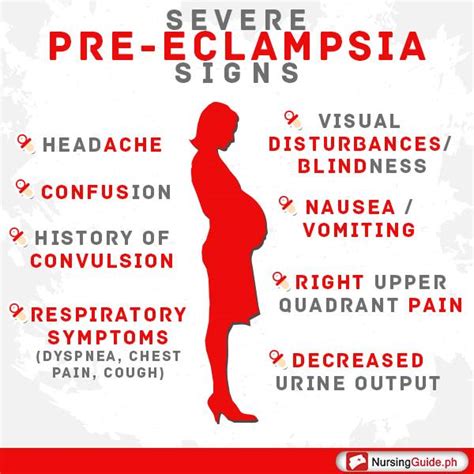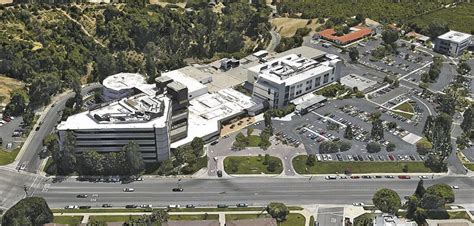Preeclampsia is a complex and multifaceted condition that affects thousands of pregnant women worldwide every year. Characterized by the onset of high blood pressure and often accompanied by significant amounts of protein in the urine, preeclampsia can lead to severe complications if not promptly identified and managed. Understanding the symptoms of preeclampsia is crucial for early detection and effective treatment, ensuring the best possible outcomes for both mother and baby.
Introduction to Preeclampsia
Preeclampsia typically develops after 20 weeks of gestation, although it can occur earlier in some cases. The condition is classified into two main categories: mild and severe. Mild preeclampsia may not exhibit overt symptoms, while severe preeclampsia can be life-threatening and requires immediate medical attention. The exact cause of preeclampsia remains unclear, but research suggests that it involves faulty placenta development, leading to high blood pressure and damage to other organs such as the liver, kidneys, and brain.
Identifying Symptoms of Preeclampsia
Symptoms of preeclampsia can vary widely among women, making it essential to monitor blood pressure and urine protein levels regularly during prenatal visits. Some of the common symptoms include:
- High Blood Pressure: The primary indicator of preeclampsia, high blood pressure can be dangerous if it exceeds 140⁄90 mmHg. Regular blood pressure checks are crucial, especially in the later stages of pregnancy.
- Proteinuria: The presence of a significant amount of protein in the urine, which can be detected through urinalysis.
- Severe Headaches: Persistent and severe headaches that do not respond to usual remedies.
- Vision Changes: Blurred vision, seeing spots or auras, and sensitivity to light.
- Nausea and Vomiting: Especially after 20 weeks of gestation, which is unusual.
- Abdominal Pain: Severe pain in the upper right or middle area of the abdomen.
- Decreased Urine Output: Noticing a decrease in the amount of urine.
- Sudden Weight Gain: More than 2 pounds in a week due to fluid retention.
- Swelling (Edema): Swelling in the face, hands, or feet, although this can be a normal symptom in pregnancy and should be evaluated in context.
Advanced Symptoms of Severe Preeclampsia
In cases where preeclampsia progresses to a severe stage, it can lead to more critical symptoms, including:
- Confusion or Disorientation: Difficulty concentrating or feeling confused.
- Severe Chest Pain or Shortness of Breath: Indicative of possible heart or lung complications.
- Seizures (Eclampsia): A life-threatening condition that requires immediate medical intervention.
Management and Treatment of Preeclampsia
The management of preeclampsia depends on its severity and the gestational age of the fetus. For mild cases, close monitoring of blood pressure, urine protein levels, and fetal well-being may be sufficient. However, in more severe cases, hospitalization may be necessary to closely monitor the mother and the fetus and to control blood pressure.
- Bed Rest: Sometimes recommended to help lower blood pressure and reduce the risk of complications.
- Medications: To control high blood pressure and prevent seizures.
- Corticosteroids: May be given to promote fetal lung maturity if preterm delivery is considered.
- Delivery: In severe cases, the safest option may be to deliver the baby, even if it means a preterm birth. The decision for delivery is made based on the severity of the preeclampsia and the gestational age of the fetus.
Preventing Preeclampsia
While there is no guaranteed way to prevent preeclampsia, research suggests that certain measures may help reduce the risk:
- Regular Prenatal Care: Regular visits to the healthcare provider can help in early detection and management.
- Healthy Diet and Lifestyle: Eating a balanced diet and maintaining a healthy lifestyle, including regular physical activity, can support overall health during pregnancy.
- Aspirin Therapy: For women at high risk of developing preeclampsia, low-dose aspirin may be recommended by their healthcare provider.
Conclusion
Preeclampsia is a significant health concern during pregnancy, but with awareness of its symptoms and proper medical care, it is possible to manage the condition effectively. Pregnant women should remain vigilant about their health, attend all scheduled prenatal appointments, and seek immediate medical help if they suspect any symptoms of preeclampsia. Early detection and intervention are key to ensuring a safe and healthy outcome for both mother and baby.
What is the primary symptom of preeclampsia?
+The primary symptom of preeclampsia is high blood pressure that develops after 20 weeks of gestation, often accompanied by significant amounts of protein in the urine.
How is preeclampsia managed and treated?
+Management of preeclampsia depends on its severity and the gestational age of the fetus. It may involve close monitoring, medications to control blood pressure, corticosteroids to promote fetal lung maturity, and in severe cases, delivery of the baby.
Can preeclampsia be prevented?
+While there is no guaranteed way to prevent preeclampsia, regular prenatal care, a healthy diet and lifestyle, and in some cases, low-dose aspirin therapy may help reduce the risk.
Understanding and recognizing the symptoms of preeclampsia is a critical step towards ensuring a healthy pregnancy. By being informed and proactive about one’s health, pregnant women can work closely with their healthcare providers to manage preeclampsia effectively, minimizing risks and optimizing outcomes for both mother and baby.



